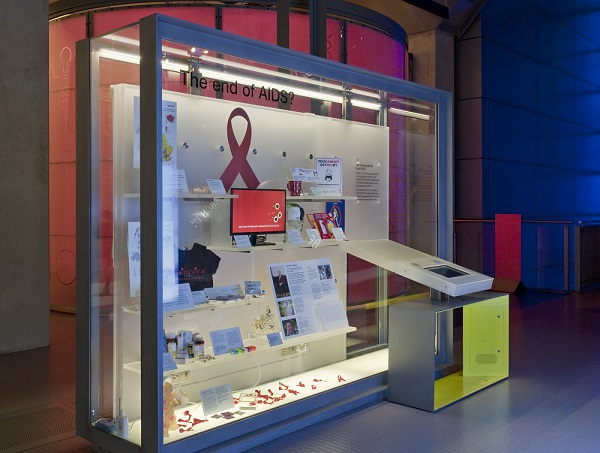December 1st 2014 marks the 26th World AIDS Day. The UNAIDS ‘90-90-90’ initiative sets ambitious global targets to end the epidemic by 2030. So how far have we come since the epidemic gained global attention in the 1980s? Here at the Science Museum we decided to explore this question with our new exhibit – The end of AIDS?

The focal point of the exhibit is an animation called ‘Growing up with HIV’. It was created in collaboration with an inspiring group of young people who live with HIV and the National Children’s Bureau. It tells the story of a young mum-to-be looking forward to the birth of her first child, while she reflects on her life and what it was like to grow up with HIV.
The group created the animation in just four workshops. First they visited the Who Am I? gallery, where they learned about our visitors and science communication. We then discussed what HIV means to them and interviewed an expert about what it does. Over the following sessions we narrowed down what were the most important messages and how to help visitors relate to them.
A key idea was to challenge some of the commonly held misconceptions by explaining what HIV does and the success of current treatment. They decided to tell a personal story about the struggles we can all face growing up.
Struggle and progress turned out to be a strong theme for the animation – referring both to science (trying to improve treatment for HIV) and people (trying to live full, healthy and happy lives).
The rest of the display was built up around the conversations we had during the workshops and from talking with experts. A key message is the importance of testing. In the UK 20% of the estimated 100,000 people who live with HIV are not aware of their infection. In the display we included a postal sampling kit from the Terrence Higgins Trust, which is available for free to high-risk groups.
You can also find a concert programme from the Freddie Mercury Tribute Concert for AIDS Awareness, held in 1992. It was at this event that 100,000 red ribbons were first distributed in the UK. The ribbon is now the iconic symbol of public awareness and support for people living with HIV and AIDS.
From our stores we brought out a collection of drug packaging which represents all the drugs an HIV patient may have taken in one month in 1999. Today some patients can take just one pill a day and trials have begun for a monthly injection. The last section of the display looks at the latest research and includes the story of Timothy Ray Brown – the only person to have been cured of HIV.
I hope you will be able to visit the display and find it as enlightening and inspiring as I have working on it. I’d like to end this post with a few words from our group:
‘We are all going through our own struggles, but we can achieve anything we want’.
Nicola Burghall is a Content Developer at the Museum. The end of AIDS? opened on 28 November and will be on display in the Science Museum’s Who Am I? gallery until late February 2015.